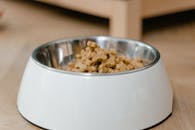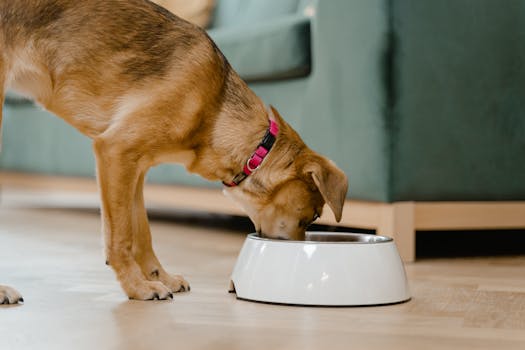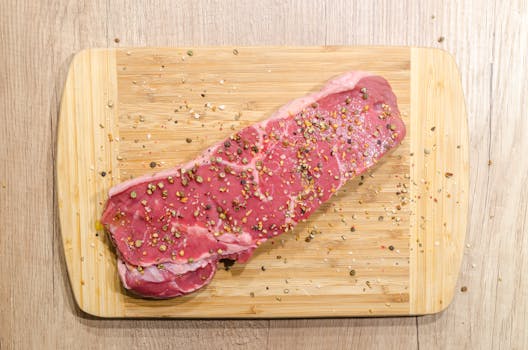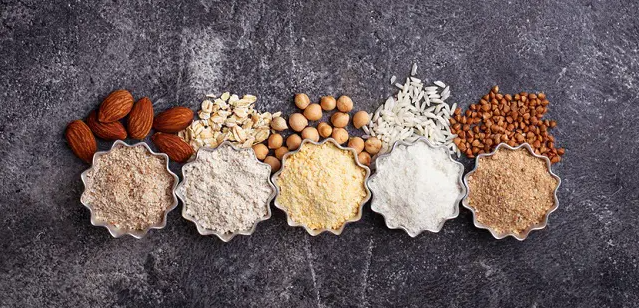
What food is actually good for dogs?
Feeding your dog may sound simple, but once you step into the world of pet food it quickly becomes confusing. Shelves are filled with dry kibble, wet tins, raw diets, grain-free recipes and endless claims about what is “the best.” The truth is that no single type of food is perfect for every dog, but understanding the benefits of each option helps you make the healthiest choice for your four-legged friend.
What makes up good woofer nutrition?
At its core, a dog’s diet should provide protein for muscle and organ health, fat for energy and coat condition, and carbohydrates or fibre to support digestion. Essential vitamins and minerals round it all out. Dogs are technically omnivores, which means they thrive on a balanced mix rather than meat alone. That said, protein quality is especially important since it fuels so many of their biological processes.
Dry Food (Kibble)

Kibble remains the most popular choice for owners. It is convenient, stores well, and usually comes at a fair price. High quality dry foods are carefully balanced and tested to ensure complete nutrition. They often include added supplements like omega fatty acids for skin health or glucosamine for joints. The crunch of kibble can also help reduce plaque build-up on teeth, though it is not a substitute for proper dental care.
The downside is that not all kibble is created equal. Some cheaper options bulk out the recipe with fillers and poor quality meat by-products. When buying, always check the ingredients list. A good kibble should list a named meat source such as chicken, beef or lamb at the top, rather than vague terms like “meat meal.”
Wet Food

Canned or pouch food is usually more appetising to dogs thanks to its higher moisture content and richer aroma. It is an excellent choice for dogs who are picky eaters or who need extra hydration. Wet food tends to be higher in protein and lower in carbohydrates than dry food, which suits many dogs very well.
The main drawback is cost. Feeding a large dog solely on wet food can be expensive. It also does not clean teeth in the same way kibble can, so dental care becomes even more important.
Raw Feeding

The raw food movement has grown rapidly in recent years. Advocates believe it mirrors what dogs’ ancestors ate in the wild and often report shinier coats, smaller stools and better energy levels. Raw diets can be prepared at home or bought in pre-made frozen packs.
While raw can be beneficial when done correctly, it carries risks if handled poorly. Raw meat may contain harmful bacteria like Salmonella, which poses a danger both to dogs and the humans in the household. Balancing nutrients at home is also challenging without expert guidance. If an owner chooses this route, it is best to consult a veterinary nutritionist to ensure the diet is safe and complete.
Grain-Free Diets

Many foods are now marketed as grain-free, claiming they are healthier and more natural. For some dogs with genuine grain allergies, this is a good option. However, true grain allergies are rare.
Recent studies have also linked certain grain-free foods high in legumes to heart problems in dogs. For most pets, whole grains such as rice and oats are perfectly safe and can provide useful fibre and energy.
So what really is the best option?
The best diet for your dog depends on their age, size, activity level and any health concerns. Puppies need energy-dense food to support growth, while older dogs often require fewer calories but more joint support. A working collie will need more protein and fat than a sleepy lap dog.
For the average healthy dog, a high quality commercial food, whether dry, wet or a mixture of both, usually provides the safest and most balanced option. These diets are carefully formulated and tested to meet strict nutritional standards. Owners who wish to try raw feeding or home-cooked meals should always do so with professional advice to avoid nutritional gaps.

Final thoughts
Dogs rely on us for every aspect of their wellbeing, and diet plays a huge role in their health and happiness. While marketing claims can be confusing, the essentials are simple: look for clearly named meat sources, avoid foods heavy in fillers, and tailor the diet to your dog’s individual needs. If in doubt, your vet is the best person to guide you.
A bowl of the right food means more than a full belly. It means better energy, a healthier coat, stronger joints and, most importantly, more years of companionship.
A high-quality commercial food (dry, wet, or a mix), made by a reputable company that meets AAFCO or FEDIAF nutritional standards, tailored to your dog’s age, size, and health.
- These foods are scientifically formulated and tested to make sure they cover all the essential nutrients in the right amounts.
- They’re safe and consistent. Every bag or tin has the same balance, which is much harder to achieve with raw or home-cooked diets unless you work with a veterinary nutritionist.
- You avoid the risks of bacterial contamination or nutritional imbalances that sometimes come with DIY raw feeding.
- You can still personalise by choosing between kibble, wet, or a combination, depending on your dog’s preferences, teeth, hydration needs, and your budget.
So the “best” isn’t about one style (raw, kibble, or canned), it’s about quality and suitability. For example:
- A senior pug might thrive on a small-breed senior kibble with joint support.
- A young working collie might do best on a high-protein performance kibble with some wet food added for hydration.
- A picky eater might need mostly wet food, but still from a balanced, vet-approved brand.
If you want to go beyond that and aim for optimal health rather than just safe nutrition, many vets suggest a mixed diet: mostly dry food for dental benefit and balanced nutrition, with some wet food added for moisture and taste.
